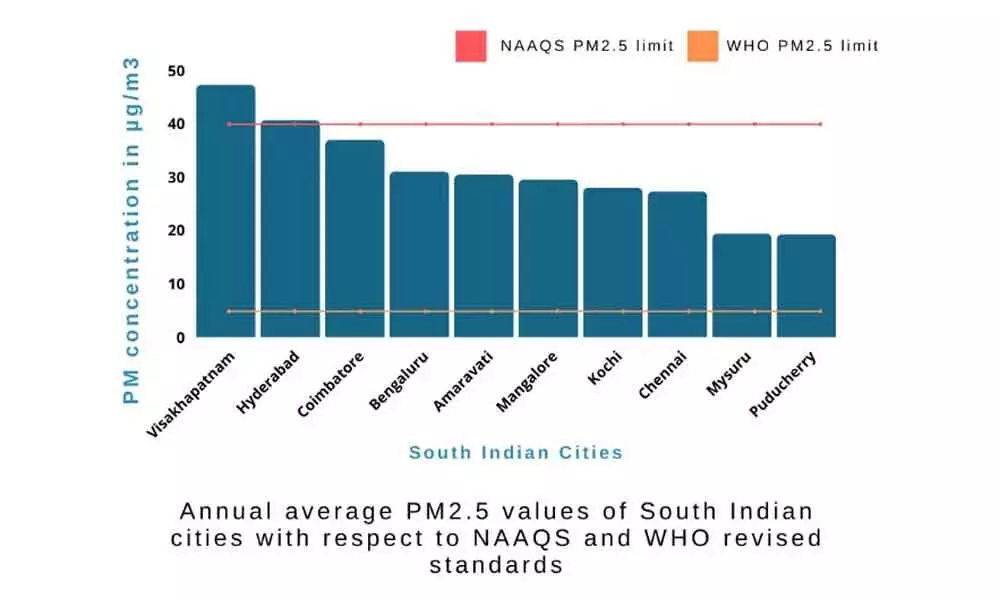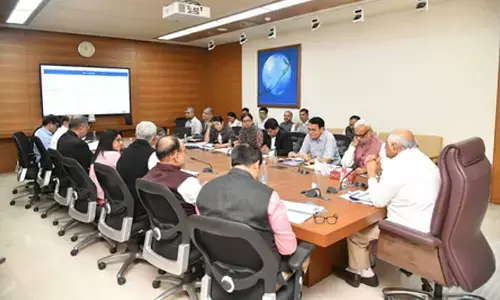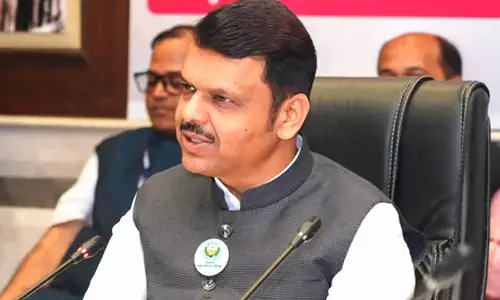Hyderabad, Vizag record sharpest rise in PM levels

A latest report by Greenpeace India, analysing the Central Pollution Control Board (CPCB)'s data from ten major cities of Southern India reveals that average pollution levels in the cities far exceed the latest World Health Organization (WHO) guidelines.
Hyderabad: A latest report by Greenpeace India, analysing the Central Pollution Control Board (CPCB)'s data from ten major cities of Southern India reveals that average pollution levels in the cities far exceed the latest World Health Organization (WHO) guidelines. The analysis is a much needed reminder that air pollution is a public health crisis that is not confined to cities only in Northern India.
Air pollution data from ten cities – Bengaluru, Hyderabad, Chennai, Amaravati, Visakhapatnam, Kochi, Mangalore, Puducherry, Coimbatore and Mysore – were selected and analysed based on the availability of data, population and monitoring station networks. It was found that despite pandemic-induced lockdowns and subsequent reduction in economic activities, the annual average values of PM2.5 and PM10 exceeded WHO revised standards by many folds.
Coimbatore, Bengaluru, Mangalore and Amaravati saw annual PM2.5 levels exceed WHO guidelines of 5 µg/m3 by 6 to 7 times. While in Mysuru, Kochi, Chennai and Pondicherry, PM2.5 levels exceeded the guidelines by 4 to 5 times.
In comparison, while annual PM10 levels in Visakhapatnam and Hyderabad exceeded the prescribed WHO guidelines of 15 µg/m3 by 6 to 7 times, Bengaluru, Mangalore, Amaravati, Chennai and Kochi recorded data that exceeded the limit by 3 to 4 times. Mysore, Coimbatore and Pondicherry recorded PM10 data that exceeded the WHO guidelines for safe air by 2 to 3 times.
The primary contributors to worsening the air quality are fossil fuel powered infrastructural development, industries, transport, waste burning and construction activity. Chronic exposure to air pollution increases the likelihood of asthma, low birth weight, depression, schizophrenia, diabetes, stroke, lung cancer and can cause premature deaths.
Commenting on the analysis, Avinash Chanchal, Campaign Manager, Greenpeace India says: "The data shows that lockdown is not a solution to air pollution. Relatively lesser economic activity and vehicles is also putting us in a dangerous position. Past source apportionment studies by CPCB have indicated that the main contributor of PM2.5 and PM10 is vehicular pollution in Hyderabad. It contributes around 50% of total pollution. We have to prioritize the immediate shift to clean energy and clean transport to stop more damage. In the case of Vishakapatnam, industrial pollution is one of the major contributors to the crisis. But let us not get derailed comparing Vishakapatnam and Hyderabad to other cities, the real problem is that all cities are exceeding WHO's latest air quality guidelines."
Chanchal also highlighted: "Making our urban transport networks accessible and sustainable can play a major role in combating India's urban air pollution crisis. Majority of the population in these cities is already using public transport or sustainable ways of transportation. But the infrastructural focus is still on private vehicles. Efforts and lifestyle of the masses must be appreciated and encouraged as they are contributing to making our cities sustainable." Terming the citizenry using public transport as 'Heroes', Chanchal adds, "The pollution control boards must realise that no level of air pollution is safe and even the long term exposure of lower level of concentrations of air pollution can severely impact human health. Thus, the CPCB must revise the current national ambient air quality standards for all pollutants based on WHO's proposed interim target and gradually achieve the revised standards."















